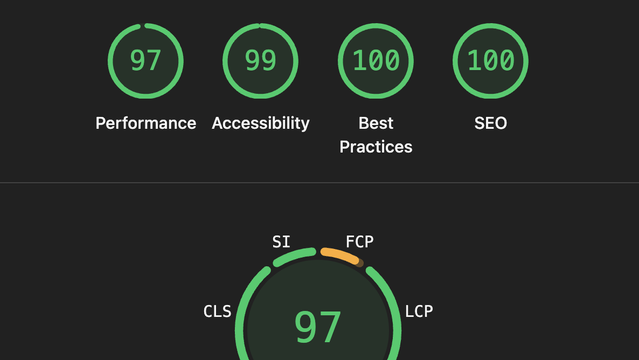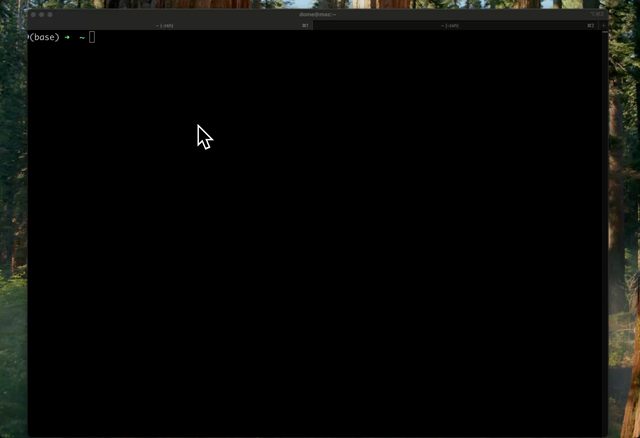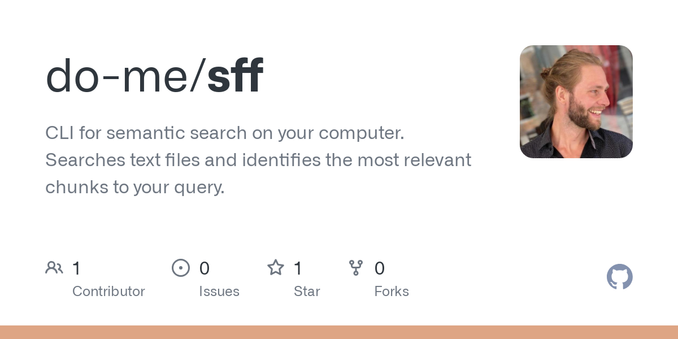This is the main square in Piran, Slovenia, early morning today. Only 10 minutes away, the 22nd Extended Semantic Web Conference ESWC 2025 will take place, starting on Sunday, June 1st, 2025. I'm looking forward to meeting dear colleagues as well as old and new friends, listening to exciting keynotes, great presentations, and many more activities.
Bridging the Gap Between Semantic and User Preference Spaces for Multi-modal Music Representation Learning
Xiaofeng Pan, Jing Chen, Haitong Zhang, Menglin Xing, Jiayi Wei, Xuefeng Mu, Zhongqian Xie
https://arxiv.org/abs/2505.23298
Context-Aware Semantic Communication for the Wireless Networks
Guangyuan Liu, Yinqiu Liu, Jiacheng Wang, Hongyang Du, Dusit Niyato, Jiawen Kang, Zehui Xiong, Abbas Jamalipour
https://arxiv.org/abs/2505.23249
Modern applications require search capabilities that go beyond basic text matching. They must be fast, accurate, personalised and context-aware. At this year's Berlin Buzzwords, Saurabh Singh will demonstrate how OpenSearch’s latest AI/ML enhancements and engine improvements enable organisations to build intelligent, scalable search experiences that meet these evolving needs.
Learn more:
Wireless Agentic AI with Retrieval-Augmented Multimodal Semantic Perception
Guangyuan Liu, Yinqiu Liu, Ruichen Zhang, Hongyang Du, Dusit Niyato, Zehui Xiong, Sumei Sun, Abbas Jamalipour
https://arxiv.org/abs/2505.23275
Building Lightweight Semantic Segmentation Models for Aerial Images Using Dual Relation Distillation
Minglong Li, Lianlei Shan, Weiqiang Wang, Ke Lv, Bin Luo, Si-Bao Chen
https://arxiv.org/abs/2506.20688
Augment or Not? A Comparative Study of Pure and Augmented Large Language Model Recommenders
Wei-Hsiang Huang, Chen-Wei Ke, Wei-Ning Chiu, Yu-Xuan Su, Chun-Chun Yang, Chieh-Yuan Cheng, Yun-Nung Chen, Pu-Jen Cheng
https://arxiv.org/abs/2505.23053
Performance improvement of spatial semantic segmentation with enriched audio features and agent-based error correction for DCASE 2025 Challenge Task 4
Jongyeon Park, Joonhee Lee, Do-Hyeon Lim, Hong Kook Kim, Hyeongcheol Geum, Jeong Eun Lim
https://arxiv.org/abs/2506.21174
Semantic Scaffolding: Augmenting Textual Structures with Domain-Specific Groupings for Accessible Data Exploration
Jonathan Zong, Isabella Pedraza Pineros, Mengzhu Katie Chen, Daniel Hajas, Arvind Satyanarayan
https://arxiv.org/abs/2506.15883
The time course of visuo-semantic representations in the human brain is captured by combining vision and language models
Boyan Rong, Alessandro Thomas Gifford, Emrah D\"uzel, Radoslaw Martin Cichy
https://arxiv.org/abs/2506.19497
Deep Retrieval at CheckThat! 2025: Identifying Scientific Papers from Implicit Social Media Mentions via Hybrid Retrieval and Re-Ranking
Pascal J. Sager, Ashwini Kamaraj, Benjamin F. Grewe, Thilo Stadelmann
https://arxiv.org/abs/2505.23250
Mitigating Hallucination of Large Vision-Language Models via Dynamic Logits Calibration
Jiahe Chen, Jiaying He, Qian Shao, Qiyuan Chen, Jiahe Ying, Hongxia Xu, Jintai Chen, Jianwei Zheng, Jian Wu
https://arxiv.org/abs/2506.21509
(YouTube) A world's first for the blind! The vOICe web app and Google Gemini Live demo: simultaneous "raw" vision from visual-to-auditory sensory substitution and AI-based verbal descriptions for "semantic" vision https://www.youtube.com/watch?v=506BvU8oMmM
LLMs the Model Context Protocol (MCP) are the Yang to the Semantic Web Project's Yin.
We now have a solution to the final hurdle—visualization.
Years of Linked Data work now come alive. I explain this, with demonstrations, in a new newsletter post.
www.linkedin.com/pulse/semant...
#MCP
Into the Unknown: Applying Inductive Spatial-Semantic Location Embeddings for Predicting Individuals' Mobility Beyond Visited Places
Xinglei Wang, Tao Cheng, Stephen Law, Zichao Zeng, Ilya Ilyankou, Junyuan Liu, Lu Yin, Weiming Huang, Natchapon Jongwiriyanurak
https://arxiv.org/abs/2506.14070…
TFW you build a site with @… and web platform standards (== semantic HTML, modern CSS, a little bit of JavaScript, and a dash of ARIA) and you look at Lighthouse for the first time …
Looks like industry best practices actually work. (Sorry for using my platform to ruin anyone’s day. 🥰) 🍋
Semantic-enhanced Modality-asymmetric Retrieval for Online E-commerce Search
Zhigong Zhou, Ning Ding, Xiaochuan Fan, Yue Shang, Yiming Qiu, Jingwei Zhuo, Zhiwei Ge, Songlin Wang, Lin Liu, Sulong Xu, Han Zhang
https://arxiv.org/abs/2506.20330
DiffSoundStream: Efficient Speech Tokenization via Diffusion Decoding
Yang Yang, Yunpeng Li, George Sung, Shao-Fu Shih, Craig Dooley, Alessio Centazzo, Ramanan Rajeswaran
https://arxiv.org/abs/2506.22362
Announcing sff: A fast, on-the-fly SemanticFileFinder written in Rust! 🦀
It scans a directory (like your notes or a repo), finds the most semantically relevant text chunks for your query, and lets you open the file in a text editor of your choice.
No vector DBs, no GPU needed. Indexes ~2500 files with 10k chunks in 250ms on a CPU.
Perfect for searching Obsidian vaults, codebases, and more.
𝚌𝚊𝚛𝚐𝚘 𝚒𝚗𝚜𝚝𝚊𝚕𝚕 𝚜𝚏𝚏
𝚜𝚏𝚏 "𝚠𝚘𝚛𝚔𝚒𝚗𝚐 𝚠𝚒𝚝𝚑 𝚐𝚒𝚝"
Join Dennis Berger, Marco Petris, and Volker Carlguth to explore 'Intent-Based Clustering.' An approach to overcome some limitations of modern hybrid search systems. Discover how upfront LLM-supported in-depth query understanding can be applied in various steps, including retrieval, clustering, validation, and presentation. Learn about the process of moving from prototype to production for large-scale, high-volume e-commerce searches.
SAVANT: Vulnerability Detection in Application Dependencies through Semantic-Guided Reachability Analysis
Wang Lingxiang, Quanzhi Fu, Wenjia Song, Gelei Deng, Yi Liu, Dan Williams, Ying Zhang
https://arxiv.org/abs/2506.17798
IPFormer: Visual 3D Panoptic Scene Completion with Context-Adaptive Instance Proposals
Markus Gross, Aya Fahmy, Danit Niwattananan, Dominik Muhle, Rui Song, Daniel Cremers, Henri Mee{\ss}
https://arxiv.org/abs/2506.20671
A Survey of Multi-sensor Fusion Perception for Embodied AI: Background, Methods, Challenges and Prospects
Shulan Ruan, Rongwei Wang, Xuchen Shen, Huijie Liu, Baihui Xiao, Jun Shi, Kun Zhang, Zhenya Huang, Yu Liu, Enhong Chen, You He
https://arxiv.org/abs/2506.19769
Semantic Caching for Improving Web Affordability
Hafsa Akbar, Danish Athar, Muhammad Ayain Fida Rana, Chaudhary Hammad Javed, Zartash Afzal Uzmi, Ihsan Ayyub Qazi, Zafar Ayyub Qazi
https://arxiv.org/abs/2506.20420
Domain Knowledge-Enhanced LLMs for Fraud and Concept Drift Detection
Ali \c{S}enol, Garima Agrawal, Huan Liu
https://arxiv.org/abs/2506.21443 https://arxiv.org/pdf/2506.21443 https://arxiv.org/html/2506.21443
arXiv:2506.21443v1 Announce Type: new
Abstract: Detecting deceptive conversations on dynamic platforms is increasingly difficult due to evolving language patterns and Concept Drift (CD)\-i.e., semantic or topical shifts that alter the context or intent of interactions over time. These shifts can obscure malicious intent or mimic normal dialogue, making accurate classification challenging. While Large Language Models (LLMs) show strong performance in natural language tasks, they often struggle with contextual ambiguity and hallucinations in risk\-sensitive scenarios. To address these challenges, we present a Domain Knowledge (DK)\-Enhanced LLM framework that integrates pretrained LLMs with structured, task\-specific insights to perform fraud and concept drift detection. The proposed architecture consists of three main components: (1) a DK\-LLM module to detect fake or deceptive conversations; (2) a drift detection unit (OCDD) to determine whether a semantic shift has occurred; and (3) a second DK\-LLM module to classify the drift as either benign or fraudulent. We first validate the value of domain knowledge using a fake review dataset and then apply our full framework to SEConvo, a multiturn dialogue dataset that includes various types of fraud and spam attacks. Results show that our system detects fake conversations with high accuracy and effectively classifies the nature of drift. Guided by structured prompts, the LLaMA\-based implementation achieves 98\% classification accuracy. Comparative studies against zero\-shot baselines demonstrate that incorporating domain knowledge and drift awareness significantly improves performance, interpretability, and robustness in high\-stakes NLP applications.
toXiv_bot_toot
AutoGraph: A Knowledge-Graph Framework for Modeling Interface Interaction and Automating Procedure Execution in Digital Nuclear Control Rooms
Xingyu Xiao, Jiejuan Tong, Jun Sun, Zhe Sui, Jingang Liang, Hongru Zhao, Jun Zhao, Haitao Wang
https://arxiv.org/abs/2506.18727
Stacked Intelligent Metasurfaces for Multi-Modal Semantic Communications
Guojun Huang, Jiancheng An, Lu Gan, Dusit Niyato, M\'erouane Debbah, Tie Jun Cui
https://arxiv.org/abs/2506.12368
SEMNAV: A Semantic Segmentation-Driven Approach to Visual Semantic Navigation
Rafael Flor-Rodr\'iguez, Carlos Guti\'errez-\'Alvarez, Francisco Javier Acevedo-Rodr\'iguez, Sergio Lafuente-Arroyo, Roberto J. L\'opez-Sastre
https://arxiv.org/abs/2506.01418
Modeling and Visualization Reasoning for Stakeholders in Education and Industry Integration Systems: Research on Structured Synthetic Dialogue Data Generation Based on NIST Standards
Wei Meng
https://arxiv.org/abs/2506.16952
Semantic Communications in 6G: Coexistence, Multiple Access, and Satellite Networks
Ishtiaque Ahmed, Yingzhuo Sun, Jingwen Fu, Alper Kose, Leila Musavian, Ming Xiao, Berna Ozbek
https://arxiv.org/abs/2506.11779
SEED: A Structural Encoder for Embedding-Driven Decoding in Time Series Prediction with LLMs
Fengze Li, Yue Wang, Yangle Liu, Ming Huang, Dou Hong, Jieming Ma
https://arxiv.org/abs/2506.20167
SlimRAG: Retrieval without Graphs via Entity-Aware Context Selection
Jiale Zhang, Jiaxiang Chen, Zhucong Li, Jie Ding, Kui Zhao, Zenglin Xu, Xin Pang, Yinghui Xu
https://arxiv.org/abs/2506.17288
WebGuard :Interpretable Malicious URL Detection via Bidirectional Fusion of HTML Subgraphs and Multi-Scale Convolutional BERT
Ye Tian, Zhang Yumin, Yifan Jia, Jianguo Sun, Yanbin Wang
https://arxiv.org/abs/2506.19356
Semantic Communication for Cooperative Multi-Tasking over Rate-Limited Wireless Channels with Implicit Optimal Prior
Ahmad Halimi Razlighi, Carsten Bockelmann, Armin Dekorsy
https://arxiv.org/abs/2506.08944
jina-embeddings-v4: Universal Embeddings for Multimodal Multilingual Retrieval
Michael G\"unther, Saba Sturua, Mohammad Kalim Akram, Isabelle Mohr, Andrei Ungureanu, Sedigheh Eslami, Scott Martens, Bo Wang, Nan Wang, Han Xiao
https://arxiv.org/abs/2506.18902
MERIT: Multilingual Semantic Retrieval with Interleaved Multi-Condition Query
Wei Chow, Yuan Gao, Linfeng Li, Xian Wang, Qi Xu, Hang Song, Lingdong Kong, Ran Zhou, Yi Zeng, Yidong Cai, Botian Jiang, Shilin Xu, Jiajun Zhang, Minghui Qiu, Xiangtai Li, Tianshu Yang, Siliang Tang, Juncheng Li
https://arxiv.org/abs/2506.03144
Description and Discussion on DCASE 2025 Challenge Task 4: Spatial Semantic Segmentation of Sound Scenes
Masahiro Yasuda, Binh Thien Nguyen, Noboru Harada, Romain Serizel, Mayank Mishra, Marc Delcroix, Shoko Araki, Daiki Takeuchi, Daisuke Niizumi, Yasunori Ohishi, Tomohiro Nakatani, Takao Kawamura, Nobutaka Ono
https://arxiv.org…
Proceedings of the 19th International Workshop on Logical and Semantic Frameworks, with Applications
Cynthia Kop (Radboud Universiteit Nijmegen), Helida Salles Santos (Universidade Federal do Rio Grande)
https://arxiv.org/abs/2506.05219
Join Radu Pop and Pietro Mele at Berlin Buzzwords as they discuss building an extensible hybrid search solution with Elasticsearch. They will cover functional modeling, cluster architecture, and practical insights on managing billions of vectors in real-world scenarios. Radu and Pietro will also address hybrid reranking challenges and the limitations of standard fusion techniques, explaining their innovative approach.
Learn more:
MTSIC: Multi-stage Transformer-based GAN for Spectral Infrared Image Colorization
Tingting Liu, Yuan Liu, Jinhui Tang, Liyin Yuan, Chengyu Liu, Chunlai Li, Xiubao Sui, Qian Chen
https://arxiv.org/abs/2506.17540
CodeDiffuser: Attention-Enhanced Diffusion Policy via VLM-Generated Code for Instruction Ambiguity
Guang Yin, Yitong Li, Yixuan Wang, Dale McConachie, Paarth Shah, Kunimatsu Hashimoto, Huan Zhang, Katherine Liu, Yunzhu Li
https://arxiv.org/abs/2506.16652
Agentic Semantic Control for Autonomous Wireless Space Networks: Extending Space-O-RAN with MCP-Driven Distributed Intelligence
Eduardo Baena, Paolo Testolina, Michele Polese, Sergi Aliaga, Andrew Benincasa, Dimitrios Koutsonikolas, Josep Jornet, Tommaso Melodia
https://arxiv.org/abs/2506.10925
Generating Long Semantic IDs in Parallel for Recommendation
Yupeng Hou, Jiacheng Li, Ashley Shin, Jinsung Jeon, Abhishek Santhanam, Wei Shao, Kaveh Hassani, Ning Yao, Julian McAuley
https://arxiv.org/abs/2506.05781
A Simple but Accurate Approximation for Multivariate Gaussian Rate-Distortion Function and Its Application in Maximal Coding Rate Reduction
Zhenglin Huang, Qifa Yan, Bin Dai, Xiaohu Tang
https://arxiv.org/abs/2506.18613
Obfuscation-Resilient Binary Code Similarity Analysis using Dominance Enhanced Semantic Graph
Yufeng Wang, Yuhong Feng, Yixuan Cao, Haoran Li, Haiyue Feng, Yifeng Wang
https://arxiv.org/abs/2506.06161
SmartGuard: Leveraging Large Language Models for Network Attack Detection through Audit Log Analysis and Summarization
Hao Zhang, Shuo Shao, Song Li, Zhenyu Zhong, Yan Liu, Zhan Qin, Kui Ren
https://arxiv.org/abs/2506.16981
Harnessing the Power of Reinforcement Learning for Language-Model-Based Information Retriever via Query-Document Co-Augmentation
Jingming Liu, Yumeng Li, Wei Shi, Yao-Xiang Ding, Hui Su, Kun Zhou
https://arxiv.org/abs/2506.18670
Similarity = Value? Consultation Value Assessment and Alignment for Personalized Search
Weicong Qin, Yi Xu, Weijie Yu, Teng Shi, Chenglei Shen, Ming He, Jianping Fan, Xiao Zhang, Jun Xu
https://arxiv.org/abs/2506.14437















































































































